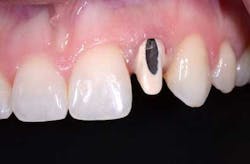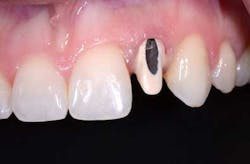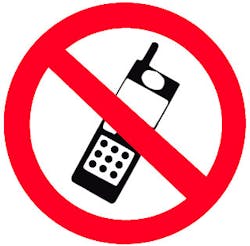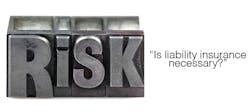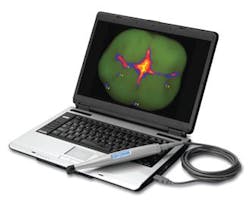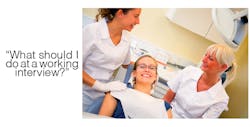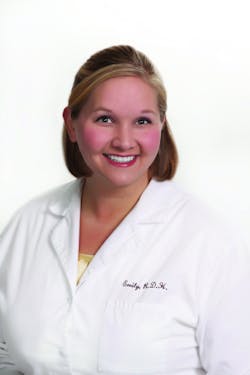Ask Emily: Dental implants, patient confirmation, and alternative cavity detection
Emily Boge, RDH, BS
June 27, 2013
Dear Emily,
I graduated last year and recently joined a practice where the doctor places a lot of dental implants. Although I’m excited about the field, I don’t have a lot of experience caring for patients with implants. Do you have any advice for treating these patients?
-Charity
Dear Charity,
First, congratulations on your new job! Here are three things you need to know about patient care for implants.
Eighty percent of patients with an implant have some level of plaque-related peri-implant mucositis, or inflammation without loss of bone in the implant site. I have heard arguments for and against probing implants because of the potential for cross-contamination from potential mucositis. This being said, I am an advocate of probing the peri-implant crevice, being very careful not to interrupt the biological peri-mucosal seal of the implant. Although some studies say probing a screw-type implant is an inaccurate assessment tool, I feel probing allows a clinician to feel the texture and consistency of the tissue along with checking for bleeding, exudate, or change in number. I prefer a color-striped resin probe for best visibility when probing.
Patients respond better to word-pictures when educating on the care of implants, especially if you can show them a clear acrylic implant typodont available through any implant company. The tell-show-do method is much more effective when using an actual implant typodont. I also use the black POI floss to show patients how to floss the implant abutment like going underneath the edge of a lollypop on a stick. This seems to be the best mental picture I have used.
Patients understand the investment in their implant and the majority of them want to learn when you hear of a new technique. I have attended many lectures on implant care on the state and national level, and every time I take home a valuable gem of information. Patients love hearing what you have learned, so share it!
The International Congress of Oral Implantologists provides a great section for dental auxiliaries. This group has been helpful to me, and I invite you to check it out.
Dear Emily,
There is a rule at our school clinic that we cannot confirm patients using any phone other than the clinic phone. It would be more convenient for me to confirm patients for clinic at night from my cell phone after I am finished with my homework – this is when the patients are home anyway! I asked my instructor if I could do it from home, but she wouldn’t allow it. Is it that big of a deal when we call them to remind them to come in?
-Stacey
Dear Stacey,
I understand why you would want to complete your courtesy calls in the evening, but I have a few concerns with your question. First, it is imperative that the phone number you use to call patients is a clinic or business phone; not your cell phone. Although you may know many of your patients as college peers or family, there is still a need to protect your own right to privacy. Recently in the Midwest, there was a dental hygiene student who had to file charges against a patient she contacted from her cell phone who chose to stalk her with continuous phone calls and text messages. Separating business from personal life is a concept that is best to learn right out of the gate.
Secondly, patients are used to receiving calls and messages during the day as a courtesy from medical offices. If they are unavailable, it is best to leave a polite message with the date and time of their appointment along with “I have set aside this time for your care” or “I look forward to meeting you then.” Keep it simple and professional.
I hope this helps answer your question.
Dear Emily,
I started working at an office this winter where one of the dentists uses an alternative cavity detection tool. Although I was hesitant to use it at first because of its unfamiliarity to me, I noticed that case acceptance increased when it was used. Now I’m interested in these tools – can you tell me a little more about them?
-Candace
Dear Candace,
The use of visual detection, the explorer, and radiographs are all very effective means of caries detection, yet there are some exciting technological opportunities available for use as well. More resistant fluoridated enamel can camouflage the caries process, causing the tactile explorer to be less effective at 60%.
At our office, we use the Kavo DIAGNOdent to evaluate all pit and fissure areas prior to sealant placement, along with the evaluation of any stained area on a restoration-free tooth. Kavo claims that caries detection will be 90% accurate with the use of reflective light detection (AKA laser fluorescence) when using a DIAGNOdent.
Spectra by Air Techniques is a device that uses Doppler radar to detect tooth demineralization in its most early stages. Fluorescence visualization allows the change in color range from green to blue, yellow, or red. Using the Spectra wand, caries appears red on the screen, while healthy enamel appears green. Spectra can also be used to detect plaque and fractured teeth. In addition, Spectra can be used to detect caries around existing restorations present in the patient’s mouth.
Fiber optic transillumination (FOTI) can be used as well to detect cracks and caries. This process involves passing a bright light through the enamel surface while removing the shine of the overhead dental light or loupe illumination to detect interproximal discrepancies in enamel. Our office uses this technique as well in evaluating the dentition during both comprehensive and routine exams.
While none of these adjunctive tools is meant to completely replace the visual, explorer, or radiographic exam, each provides a unique benefit for clinicians.
---
Resident hygiene expert Emily Boge answers your toughest questions on professional relationships with instructors, employers, and patients, what to use and know in the clinical setting, and how to successfully make the transition from student to professional. Send your questions to [email protected], and you may see it in next month’s column!
Previous "Ask Emily" columns:
Ask Emily: Nose rings, scheduling from the chair, and working with sensitive patients
Ask Emily: How to get along with instructors and what you should know about ordering instruments for your first operatory
